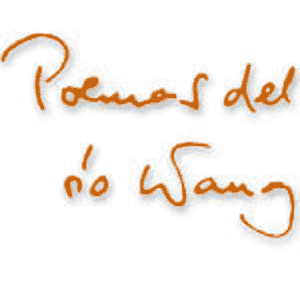
Марта Шебештьен и ансамбль Мужикаш: Вот кричит петух (3'06"). Песня с альбома The rooster is crowing. Hungarian Jewish folk music (1992). – The CD was released outside of Hungary under the title Máramaros: The Lost Jewish Music of Transylvania.
(Мы уже писали about this album, with reference to the alleged Jewish roots of the song “Bella ciao”. The Muzsikás Ensemble visited those old Gypsy musicians who used to play on the feasts of the Hasidic Jewish communities of Maramureş, destroyed in 1944, and collected from them the former songs of these communities.)
| Szól a kakas már Majd megvirrad már Zöld erdőben, sík mezőben sétál egy madár. Micsoda madár, Micsoda madár Sárga lába, kék a szárnya Engem odavár. Várj, madár, várj Te csak mindig várj Ha az Isten néked rendelt Tiéd leszek már. Mikor lesz az már, Mikor lesz az már? Jibbone ha-mikdos ir Cijon tömale Akkor lesz az már. | Вот кричит петух, Вот уж рассветает, В лесу зелёном, на ровном лугу Гуляет птичка. Что это за птичка, Что это за птичка? Жёлтые ножки, голубые крылья, Она ждёт меня. Жди, птичка, жди, Всегда меня жди, Если Бог тебя выбрал, Я буду твоей. Когда это случится? Когда это случится? Йибонэ ха-микдош ир Цийон тэмалэ Тогда это случится. |
То есть, когда?
Напрасно обращаемся мы к приложенной к диску брошюре за объяснением.t of the CD for explanation. There we can only read the legendary story about the genesis of the song in the words of the musicologist Bence Szabolcsi:
Хассидский раввин Эйзик Тауб came around 1780 to Nagykálló as a melamed (teacher) of the children of the local rashekol (president of the Jewish congregation), and later he became the rabbi of the same town. A great lover of the nature and of poetical spirit, once while walking in the fields, he heard the song of a little shepherd, and he felt an irresistible urge to learn it. So he purchased the song for two forints. As soon as they made the bargain, the rabbi learned the song and the shepherd boy forgot it. Since then the Jews of Northern Hungary feel this song their own, and they sing it in all their religious feasts, because they interpret its text as allegorically speaking about the coming of the Messiah.

Of a Hungarian shepherd boy even a Tzadik can only buy an authentic Hungarian folk song. This is also attested by Bence Szabolcsi: The rooster is crowing “is, both in the text and in the melody, a not too noteworthy variant of a well-known Hungarian folk song, with forcibly inserted Hebrew lines.” (“Népdalok” [“Folk songs”], in Az Egyenlőség Képes Folyóirata, 1921.) Later we will have more about these “forcible insertions.” But first let us try to find out how a more or less typical Hungarian folk song could become such a popular Hasidic Jewish song?
An answer to this question can be found in the modality of this song. Jewish music – both Klezmer and liturgical cantorial songs – is based similarly to Gregorian music upon different modes or scales, in Yiddish shteygers. One of these modes, the Ahavoh rabboh, named after the opening words of the morning prayer of the same name which is recited in this mode, is especially popular among Hasidic Jews. A great number of Klezmer pieces of Hasidic origin and tish nigunim – songs sung on Shabbats and high holidays at the Rabbi’s table, often in ecstatic mode – are built upon this scale.
The Ahavoh rabboh corresponds to a modified Phrygian scale – from here its Yiddish name freygish, used in Klezmer music – where the third tone is raised by a half note: mi-fa-si-la-ti-do'-re'-mi'. Just like most Eastern European folk songs, so this scale does not have a definite “owner”: Spanish Flamenco uses it and calls it “Gypsy scale,” while in Arabic and Turkish music it is known as hijaz maqam. And a closer look at our folk song, The rooster is crowing reveals that it is built upon the very same Phrygian scale with the raised third tone. Thus the Jewish community could absorb it without any changes into the framework of their own traditional musical world and identify with it.
Let us hear an example of such a freygish piece from the traditional Eastern European Klezmer repertoire: the Yiddish folk song Az du furst avek – “When you leave” in the interpretation of Joel Rubin (clarinet in C) and Joshua Horowitz (tsimbl). Apart from the freygish scale, the rubato introduction and the slow, protracted, but strict rhythm also confirm the kinship of the two songs:
Rubin & Horowitz: Az Du Furst Avek (3'23"). From the album Bessarabian Symphony. Early Jewish Instrumental Music (1994).
(Joel Rubin and Joshua Horowitz in this album attempt to reconstruct the late 19th-century Jewish instrumental music. Similarly to the “historical trend” known from the performances of Baroque music, they also play on period instruments, and try to revive the authentic practice of musical performance, characterized by fluctuating rhythms, rich ornamentation, frequent use of glissandos, and generally a rendering which stood much closer to vocal technics. Their album, however, is much more than a simple excursion of cultural archaeology: it is enjoyable and living music played in a sensitive and emotionally rich manner.)
 Rooster on the margin of the Kaufmann Haggadah, published by us in the internet
Rooster on the margin of the Kaufmann Haggadah, published by us in the internetBut let us now return to the text of the song. Apart from the last strophe, it is a typical Hungarian love song. The bird allegory of the lovers is well known from several Hungarian folk songs. The last strophe, however, is a late interpolation added by the Hasidic Jewish community – perhaps by Eizik Taub himself – which radically reinterprets the whole song.
The Hebrew line of this strophe is a verbatim quotation from a late Medieval piyut, a Jewish liturgical poem. The piyut called Tzur mishelo was composed by an unknown poet in Northern France, not later than the second half of the 14th century. This poem quickly spread among the Jewish communities of Europe, and it is still sung on every Shabbat at the festive board, as the introduction of the after-meals blessing Birkat ha-mazon. – It is interesting to note that the today widespread melody of Tzur mishelo is built around the same Ahavoh rabboh mode like The rooster is crowing.
The strophes of Tzur mishelo follow the individual blessings of Birkat ha-mazon which say thanks to God for the meal, for the land given to the Patriarchs, and then they supplicate the coming of the Messiah and the rebuilding of the Temple.
The rooster is crowing took over from these supplications the first verse of the last strophe of the piyut: יבנה המקדש עיר ציון תמלא, in Ashkenazi prononciation: Yibone ha-Mikdosh, Ir Tziyayn temale. That is: “The Temple will be rebuilt and the City of Sion repopulated.” Then will that be!
This strophe elevates this song to the heights of the Song of Songs. As in the traditional Rabbinic interpretation the lovers of the Song of Songs allegorically represent the longing of the Everlasting One and His people for each other, so the singer of The rooster is crowing as a representative of the Jewish people in exile is longing for her lover, the Everlasting One, with whom she can unite only in the Messianic times to come, after the return to the Promised Land and the rebuilding of the Temple of Jerusalem.
This is how the most popular Hungarian Hasidic song was born from the marriage of a Hungarian folk song with a potentially Jewish melody and of a love poem elevated to transcendental heights.
 The “bridegroom”-piece of a Persian Jewish double portrait, c. 1846. Its Persian-language inscription written in Hebrew letters is: Târ-zan ʿArus ben Shelomo – “ʿArus ben Shelomo playing on tar.”
The “bridegroom”-piece of a Persian Jewish double portrait, c. 1846. Its Persian-language inscription written in Hebrew letters is: Târ-zan ʿArus ben Shelomo – “ʿArus ben Shelomo playing on tar.”But the story is still far from its end. It is just like the piyut Tzur mishelo has a mysterious ability to inspire love poems. A thousand kilometers to the south from Nagykálló, in Sephardic Jewish communities the Tzur mishelo is intertwined with a very popular love song, although here the base of kinship is the melody rather than the text. Sephardic Jews sing to the melody of this piyut the song known both as Los bilbilicos cantan – “The nightingales are singing” – and La rosa enflorece – “The rose is blossoming.”
Savina Yannatou and the Primavera en Salonico: Los bilbilicos cantan – “The nightingales are singing” (4'11"). From the album Άνοιξη στη Σαλονίκη (Spring in Saloniki, 1995).
(From this CD of Savina Yannatou, collecting the songs of the former Sephardic community of Thessaloniki, we have already quoted two songs in two posts, here and here. This song, originating in Anatolian Sephardic communities, is our third favorite. The word bilbilico, ‘nightingale’ comes from Turkish bülbül, provided with a Sephardic diminutive suffix, while the expression “the moon is wounded” is a formula borrowed from high literature for the slowly vanishing moon.)
| La rosa enflorese hoy en el mes de may mi alma s’escurese firiendose el lunar Los bilbilicos cantan con sospiros de aver, mi alma i mi ventura estan en tu poder. Los bilbilicos cantan en los arvos de la flor, debacho se asentan los ke sufren de amor. Mas presto ven, colomba mas presto ven con mí, mas presto ven, keridha, corre i salvame. | The rose is blossoming now, in the month of May, my soul is getting dark as the moon is wounded. The nightingales are singing sighing with desire my soul and my fate is in your hands. The nightingales are singing on the blossoming trees under them are sitting those suffering of love. Hurry quickly, dove, hurry quickly to me, hurry quickly, my dear, hurry, save me. |
 The “bride”-piece of a Persian Jewish double portrait, c. 1846. Its Persian language inscription, written in Hebrew letters is: Rahel dar hâl vasmeh keshidan – “Rachel painting her eyebrow.”
The “bride”-piece of a Persian Jewish double portrait, c. 1846. Its Persian language inscription, written in Hebrew letters is: Rahel dar hâl vasmeh keshidan – “Rachel painting her eyebrow.”And finally let us hear The rooster is crowing as performed by its most authentic interpreter, Rabbi Eizik Taub’s sixth descendant in a direct paternal line, Rebbe Menachem Mendel Taub, the Rabbi of the Kaliver – “of Nagykálló” – Hasidic dynasty. I do not know how fluent the Kaliver Rebbe is in Hungarian, but in any case The rooster is crowing is sung by him with an unmistakable accent of Szabolcs county, the traditional region around Nagykálló. In Jerusalem, on every Shabbat, in Hungarian.




















Add comment